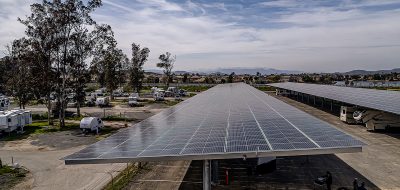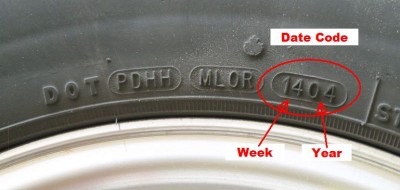 Article featured in CyberSam eNews November 2010
Article featured in CyberSam eNews November 2010
By James Mannett
RV solar panels can provide some and even all of your on-board electricity needs. How well RV solar works for you and how much it costs is not necessarily a function of the size or type of RV you own. Instead, the effectiveness and practicality of RV Solar depends mostly on the household equipment and systems aboard the RV and how (and also how often) they are being used.
James Mannett, a former energy industry executive and current owner of CEA Solar, answers questions from readers about the proper use of Solar Panels for RV use.
Dear James,
I am looking for a solar system for my travel-trailer camper. My goal is to have the camper running completely off solar power. This includes all the 120 VAC items being run in the camper, such as space heaters (only in the winter), television, microwave, fridge, water heater, a laptop, and other small plug-in items. According to the campground I am in, I used about 706 kWh of energy the last month I was running the space heaters. I would like a battery bank that would allow for at least two days worth of energy storage in the winter months. Can this be done and what would it cost?
Signed: Off Grid Dreamin’.
Dear ‘Off Grid’
If money is no object (and it usually is) it can be done, but it may not be practical. You use 705 kWh of electricity each month, which is a lot. If I run a quick calculation, you would need 40 solar panels (130 watts each). To store enough power for one 24 hour period, you would need 36 batteries; 72 batteries for two days. The cost for such a system could be as much as $40,000 to $50,000. Or about 50% less, assuming government incentives and utility rebates would apply. The batteries would need to be replaced about every 5 years. And then there is the question of where to put all that equipment including the panels, which would occupy an area of about 600 square feet. And finally the mounting hardware, wiring, combiner boxes, disconnects, fuses, etc. Whew!
The hardest part about implementing your plan is the use of the electric space heaters, electric water heater, and electric fridge. Electric space heaters, due to the fact that they are a “resistive load,” are huge energy hogs and very inefficient. Air conditioner/heat pumps are more efficient, but still big energy users and don’t work well when the temperatures get really cold.
Here’s another way to go about it: Replace your heating requirement with propane by using your RV’s furnace. If permitted by law, you may even use something called a “blue flame” heater, which emits virtually no CO and has no circulation fan thereby preserving battery power. (Follow all precautions and directions carefully.) Now your energy demand is greatly reduced. If you go further and rely on propane to heat your water and run your fridge, your electricity demand is now at a level that is much more manageable and where the addition of a few solar panels could provide all the electricity you need. And this is how most “dry campers” or “boondockers” do it.
In the absence of the exact power specifications of the appliances you mentioned and the number of hours each day you operate them, I can give you an example of what you might need, assuming your heating, hot water, and fridge are powered from propane:
| • | Install a 12 V-120 V inverter — preferably 2000 watts. The cost, including a professional installation, wire, fuses, and remote control is around $2,200. This is optional, but converts battery power (12 V) to household power (120 V) enabling you to use common household appliances on occasion. |
| • | Install 4-6 accessories batteries wired in a series/parallel configuration. You can expect to pay about $500-$700. |
| • | Install 450-600 watts of RV solar panels on the roof atop tilt brackets facing south. This would be 4-6 panels depending on the wattage rating of each one. You can expect to pay about $3,500-$5,000 including wire, brackets, installation, and weatherproofing. |
| • | Finally you will need a solar charge controller, wire, and monitor panel suitable to handle the load from all the panels. You can expect to pay about $500-$1,200. |
| • | And finally, a back-up generator for those few times when Mother Nature just doesn’t provide enough sunshine for a long enough period to fully charge your batteries, or when inclement weather or an equipment problem occurs. |
The above is just an example based on your individual energy demand. Depending on how conservative you can be with your energy demand, the RV solar system could be scaled down even further driving your actual cost much lower. I know of many RV solar users that have just one or two RV solar panels and one or two batteries and still generate and store all the power they need.
Have questions about RV solar power? You may write James Mannett at [email protected] or visit his blog at blog.rvsolarnow.com where you may post your comments or suggestions about this article or others that appear there.
Read This Week’s RV Tip



Kevin McCarthy
I have a 1986 VW Westfalia camper with a 44 ah house battery. I’m looking to run an in dash car stereo and the pump for the sink plus maybe charge an iPod or phone. Would a single 120 watt solar panel keep me going? What about an inverter?
Good Sam says: I have forwarded your question to Tech Topics. You may also want to check out the forums as they are a great resource for information:
http://www.goodsamclub.com/forums/default.aspx